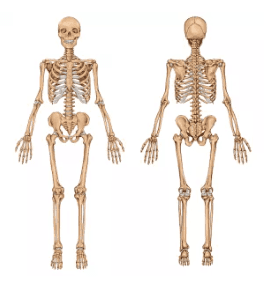As any NYC Bone Fracture Attorney can attest, a fracture is a medical condition in which the continuity of a bone is broken. Lay people often refer to this condition as a break, but cracks in the bone can also be classified as fractures. A large portion of bone fractures are the result of stress or high force impact, but bone breaks can also result from medical conditions like cancer or osteoporosis.
All About Bone Fractures – Causes, types of fractures, and treatment information.
Bone Fractures – Medical information about broken bones.
Fracture First Aid – What to do in the event of a broken bone.
Stress Fractures – Information about stress fractures, causes, symptoms, and treatment options.
Types of Fractures
There are several different types of fractures that can result after an injury. The main categories include incomplete, complete, simple, and compound. Complete and incomplete fractures will refer to the manner in which the bone breaks. A complete fracture refers to a bone that snaps entirely, while an incomplete fracture will involve a crack of the bone without a complete break.
For a free legal consultation, call (212) 732-2929
Simple and closed fractures also have some important distinctions. A simple fracture may also be referred to as a closed fracture, and the bone will break without creating an open wound within the skin. A compound fracture, or an open fracture, will cause the bone to break through the skin. Other types of breaks include compression, greenstick, hairline, spiral, and impacted fractures, among others.
Compound Fractures – Causes, signs, and treatment options for compound or open fractures.
How Do I Know if It’s Broken? – Broken bone information from Kid’s Health.
Open vs. Closed Fractures – Outlining the differences between open and closed fractures.
Types of Fractures– Information about the various types of bone fractures.
Fracture Causes
Healthy bones are tough and resilient, and they are designed to withstand powerful impacts. However, in some incidents, the severity of the injury or other factors may result in a break. Bone fractures are often caused by trauma, and there are a variety of activities that could cause broken bones:
-Motor vehicle accidents
-Sports injuries
-Playground injuries
-Bike accidents
-Slip and fall injuries
Click to contact our personal injury lawyers today
Certain populations also tend to be more susceptible to broken bones than others. Children are at a high risk of fracture and personal injury, as kids tend to be more physically active than adults. Older adults tend to have weaker bones and are a high risk for falls, making them likely to experience injury or fracture, and people with certain medical conditions like osteoporosis that weakens the bones are also at risk of personal injury.
Series of Broken Leg X-Rays
Complete a Free Case Evaluation form now
Signs & Symptoms of a Bone Fracture
If you suspect that you may have fractured a bone, there are several signs that you can look for, although they may vary depending on the bone, your age, and your general health. Some of the most common signs include:
-Pain
-Bruising
-Swelling
-Discoloration of the skin
-Bleeding (with an open fracture)
-Inability to move or put weight on the affected area
-Dizziness or feeling faint
-Nausea
-A clammy and pale appearance
Whenever possible, it is important to keep a person who has experienced a fracture still until a medical professional is present to avoid further personal injury and to assess the situation. Immobilizing the fracture before moving the individual can be crucial in preventing further damage. However, if the victim is in a dangerous situation, moving him or her to safety despite a potential fracture may be the best course of action.
Bone Fractures – How to tell if you have fractured a bone.
Broken Arms – Signs and symptoms of an arm fracture.
Hip Fracture Symptoms – Mayo Clinic outlines the signs and symptoms of a hip fracture.
Wrist Fractures – The signs and symptoms of hand and wrist fractures.
Treatment and Healing
Bone healing is a naturally-occurring process that will begin automatically. Fracture treatment will be used to ensure that the best possible function is restored to the injured part after healing. Treatment options focus on immobilizing the bone to provide for best possible circumstances for healing, and this may include the use of plaster casts or braces, metal screws and plates, external fixators, or intra-medullary nails. For some of these treatment options, surgical intervention is necessary.
Healing is typically a straightforward process if the bone is kept immobile and properly-aligned throughout the healing process. However, the patient’s age, the bone affected, the fracture type, and patient health will all be factors that can influence how quickly the bone heals. Additionally, once the bone has healed a patient may need to undergo physical therapy in order to restore mobility and muscle strength to the affected area before full or optimal function is restored.
Fracture Healing – Tips on how to speed up fracture healing.
Physical Therapy and Fracture Rehab – How physical therapy can help rehab after a fracture.
Splints and Casts – Treatment options for fractures.
Types of Casts – Information from the University of Rochester Medical Center about different cast types.
Complications & Injury Prevention
While fracture treatment is highly successful, there are a few possible complications of which to be aware. In some cases, the bone can heal in the wrong position, and childhood bone fracture could disrupt the normal growth and development of a bone. In rare cases, persistent infection to the bone or bone marrow may occur, and if the bone loses its blood supply, death of the bone may occur.
Fortunately, there are several ways that you can reduce your risk of suffering a fracture. Staying active with physical activity will make your bones dense and strong, especially when you partake in weight-bearing exercises like running, dancing, and walking. Ensure that you are getting enough calcium in your diet in order to support healthy bones, and spend time outdoors in the sunlight to get the vitamin D your body needs to absorb this calcium.
Bone Fractures – The Cleveland Clinic discusses possible complications and preventative measures.
Fracture Prevention – Helpful tips for preventing fractures.
Hip Fracture Complications – Potential complications that may arise with hip fractures.
We provide dedicated representation for victims of personal injury cases, from car and construction accidents to serious injuries, wrongful death, and beyond.
Call or text (212) 732-2929 or complete a Free Case Evaluation form






